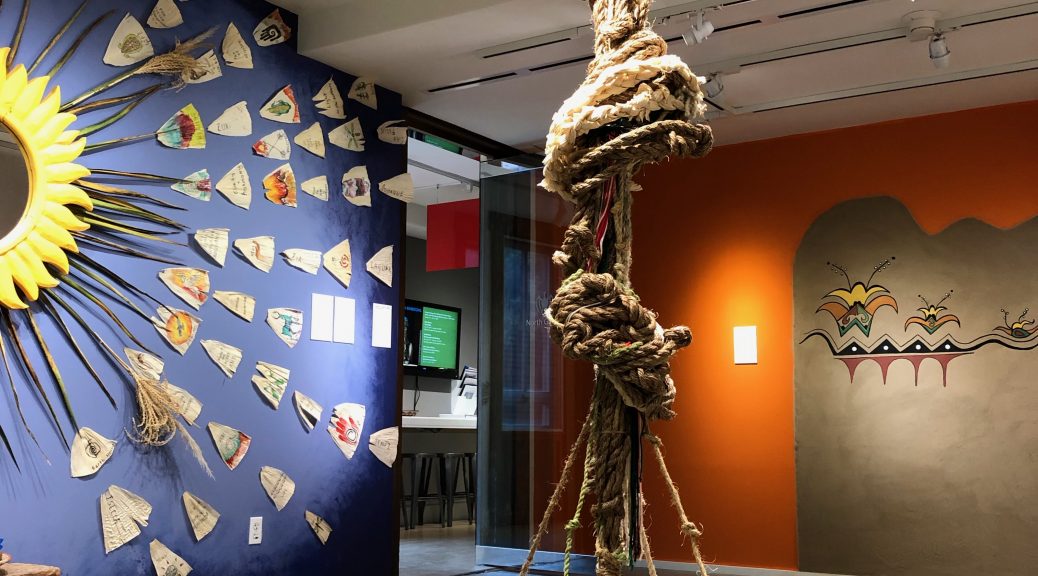
RECONCILIATION
Last month, the IAIA Museum of Contemporary Native Arts (MoCNA) in Santa Fe, New Mexico opened one of its newest exhibitions, Reconciliation. It responds to decades of activism and the negotiations that culminated in the 2018 monumental decision by the Santa Fe Fiesta Council and the Caballeros De Vargas to discontinue “La Entrada,” a 20th century pageant inaccurately portraying the reconquest of Santa Fé.
At the heart of the exhibition, recognizing the power of art to open dialogue toward reconciliation, MoCNA invited Native American and Indo-Hispano artists to participate in this unprecedented effort. It features twelve distinct installations, each created specifically for this exhibition by the following artists: Ramon Barela, Paula Marie Castillo, Lynnette Haozous, Deborah A. Jojola, Roger Montoya, Camilla Trujillo, and Joshua Suina.
Given my interest and decades-work as both scholar and practitioner in this topic, including my participation in the negotiations that led to the decision to end “La Entrada,” in July 2018, I was asked by MoCNA to curate the exhibition, which I gladly accepted. When it was announced that the pageant was going to be discontinued, however, MoCNA suggested not doing an exhibition at all. However, I was able to convince them to continue as planned, recognizing that reconciliation is a process and that art could be a part of that necessary ongoing dialogue. My effort to advance this work was based on recognizing the lingering tensions in the community of Santa Fe, following the end of La Entrada, revealing the need for continued energy toward reconciliation, healing and ultimately transformation.
Once we identified available artists and convened them, I began what evolved into a series of facilitated discussions. MoCNA had actually envisioned a traditional exhibition, where the existing art of individuals would be featured. The idea was that it would be loaned to the institution and curated around the theme. However, at the very first meeting the artists expressed their desire to work in collaboration to create installations to fit into three distinct spaces in the museum. None of us may have fully recognized the challenge in this collaborative framework, given constraints of time and support, but believed that that the effort was worth the investment.
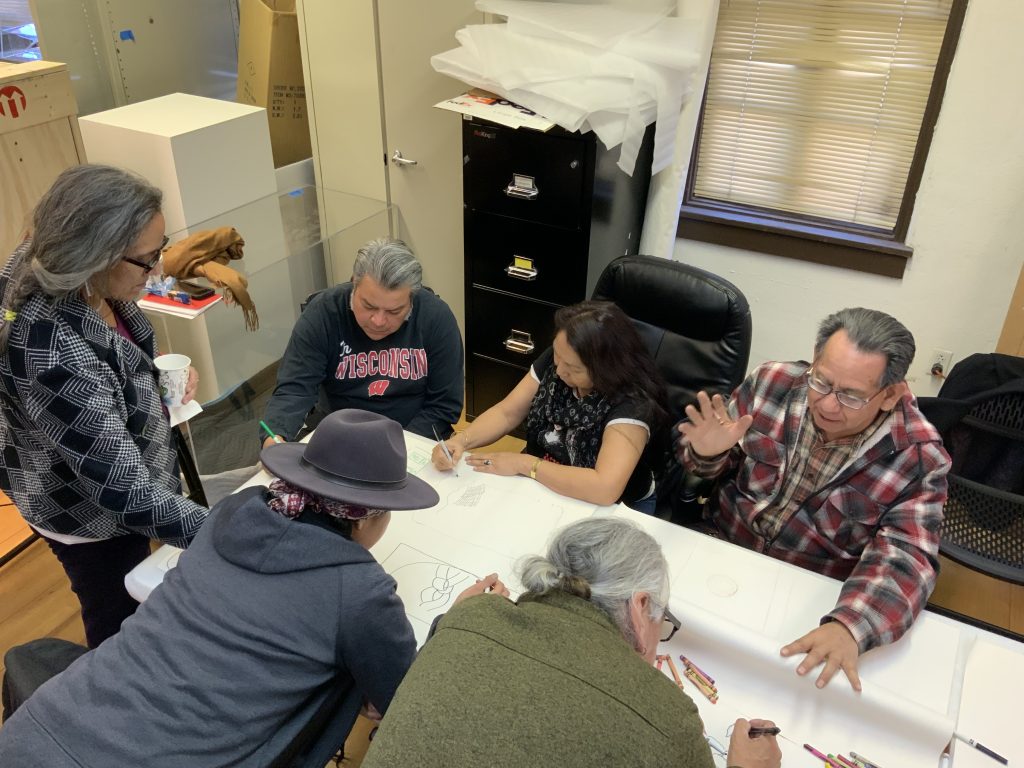
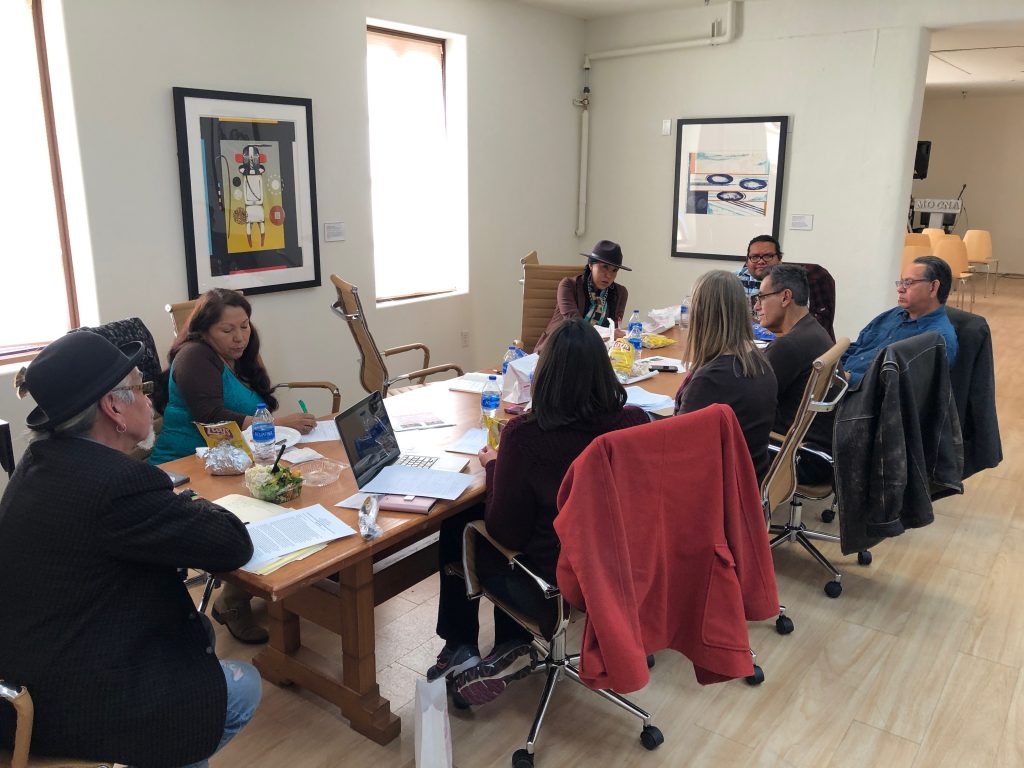
As a creative team, we gathered for weeks and in sharing stories and establishing the objectives and ideas. The weeks turned to months. The effort revealed from the very beginning how challenging reconciliation is, even for creatives. Moving past my own assumptions, I realized that not all come to the table with the same understanding of the primary objective. Some wanted to preface the violence of colonialism or to focus solely on the profundity of events like the Pueblo Revolt, while others only the imperative of healing. Some came with a deep understanding of the complexity of issues that define history and identity and others came willing to learn. My focus was to ground the entire arc, framing the work from both truth to the possibility of transformation. From all of this dialogue, we began to move from the concepts toward the development of prototypes. What was reflected in all of this work were both the challenges and tensions as well as the opportunities and inspirations, a reflection on a smaller scale of this type of work as a whole in community.
These same challenges and opportunities were revealed in the culminations that led up to the last two weeks of installation. It was arduous and yet as we entered this phase, I could not help reflect that as I worked alongside the artists, braiding, building, layering and growing, what we were doing was the work of reconciliation in the community. With our hands and hearts, fiber and dirt, what began to emerge was the map for moving us through to the other side of trauma, tracing the arc from truth toward transformation. It was this process that was more private that I loved the most.
On May 30th, the exhibition opened with the following installations.
Reconciliation – The Introductory Text

This exhibition by Native American and Indo-Hispano artists centers on truth, racial healing and transformation, grounded in the promise of reconciliation. It responds to decades of activism and negotiations that culminated in the 2018 decision by the Santa Fe Fiesta Council and the Caballeros De Vargas to discontinue “La Entrada,” a 20th century pageant inaccurately portraying the reconquest of Santa Fé.
The cultural wounding that came from Spanish colonialism and United States imperialism led to a loss of lives, land, language and cultural traditions, as well as the erasure of truth from the historical narratives, a reality impacting both Native American and Indo-Hispano communities. Recovery, healing and transcendence begins with a critical remembering and creative reimagining.
The story of this place is actually one of astonishing complexity, set within a magnificent and sovereign landscape, with a unique and richly woven history. For the surrounding Pueblo communities, the phrase most closely aligned to the Spanish concept reconciliación in the Tewa language is Wiya eh kodi ani, which means, “putting things right again.”
As an expression of “post-Entrada” creativity, Reconciliation reveals the power of art to raise consciousness and strengthen community. Moving us past historic trauma, the installations explore the beauty of converging cultures and the shared roots, traditions and histories between Native Americans and Indo-Hispanos. Reconciliation is not a single event. Like this exhibition, it invites us to participate in a process that does not simply allow us to contemplate history, but encourages us to make it.
Yucca Moth Field- Mutualism and Coevolution by Paula Castillo
This installation is inspired by the biological relationship between Yucca glauca (soapweed yucca) and Tegeticulla yuccasella (yucca moth) as an analogy for mutualism and coevolution to provide a perspective on the historical relationships between humans in this region.
For over 40 million years approximately 50 different species of yucca moths co-evolved with 50 different species of yucca in the region. Neither the yucca nor the moth can survive without the other. The moth’s larvae depend on the seeds of the yucca plant for food, and the yucca plant can only be pollinated by the yucca moth. The Yucca moth field is not simply a conscious reminiscence; its intent is to release a simple yet enigmatic essence of humanity in a fleeting contemplation of human evolution and cohabitation.
The moth installation evokes the thought that our diverse communities and cultures thrive and depend on each other for survival similar to the yucca and the moth. Under the guidance of the artist, the moths were created at the Belen Public Schools and Art Smart.
Braiding Reconciliation by Lynnette Haozous (Chiricahua Apache/Taos Pueblo/Dine)
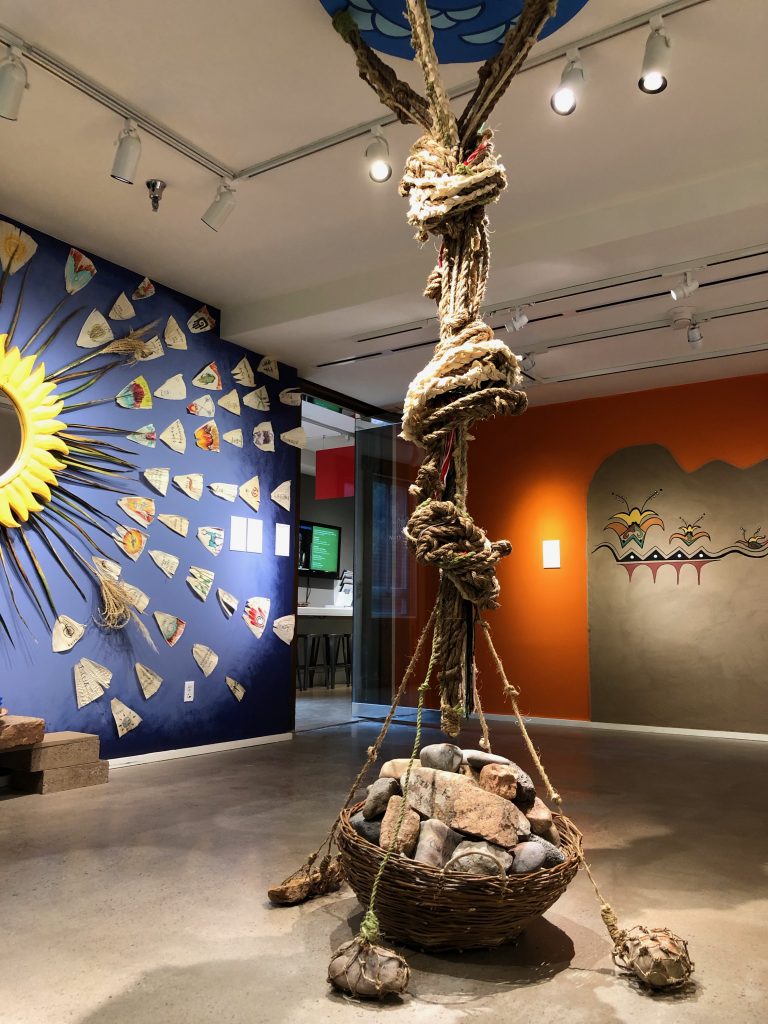
The installation uses both natural and synthetic ropes in an effort to represent the past and its traumas as well as the convergence and promise of reconciliation. The process of tying and untying of knots, of braiding and threading reveals the imperative of this process and should conjure metaphorical notions of umbilical cord, DNA Helix and braids.
The ropes and knots are reminiscent of those used for the Pueblo Revolt in 1680, where Pueblo runners used the cord to mark time and form the basis of communication. In the face of colonial violence, this historic event represents resistance and survival. Yet, this watershed moment also dramatically changed Pueblo-Hispano relations, inaugurating centuries of inter-relations and key points of cultural convergence and reconciliation. Today, we use these cords to represent the promise of “coming together.” With each knot we tie together we continue the work towards reconciliation of our communities.
The synthetic ropes represent the present while the natural materials of yucca, corn husks and wool form the basis of past, present in future rooted in strength and resilience. Rocks from communities throughout the region also anchor the installation.
Prayer to All My Relatives by Deborah A. Jojola (Isleta and Jemez Pueblos)
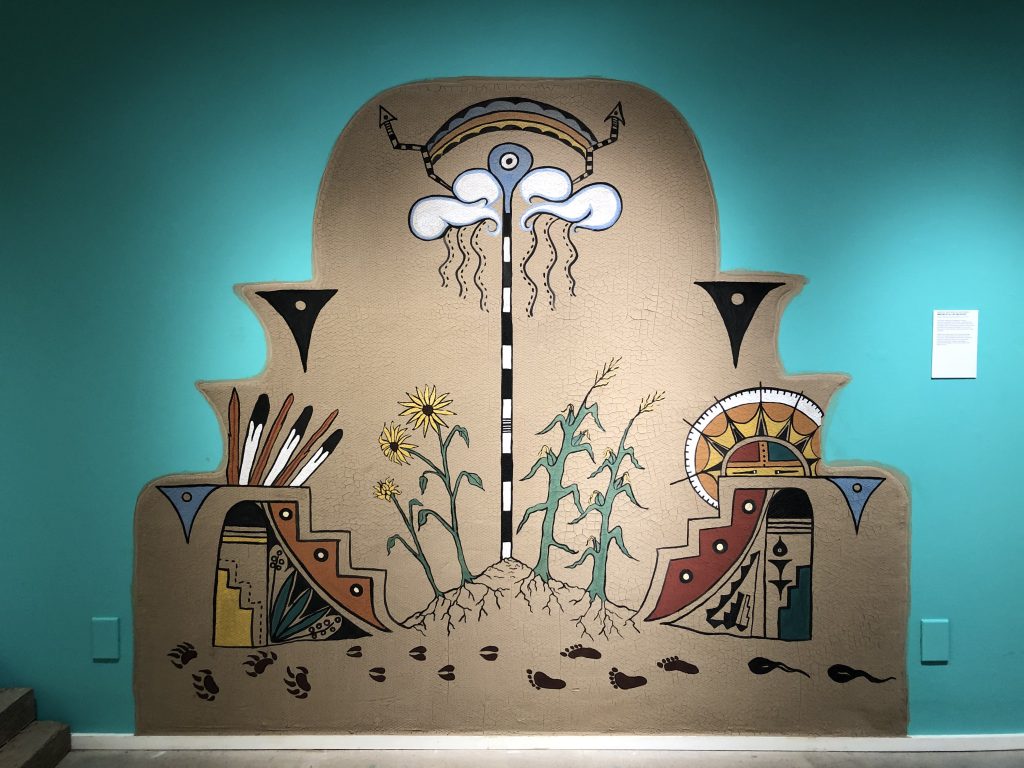
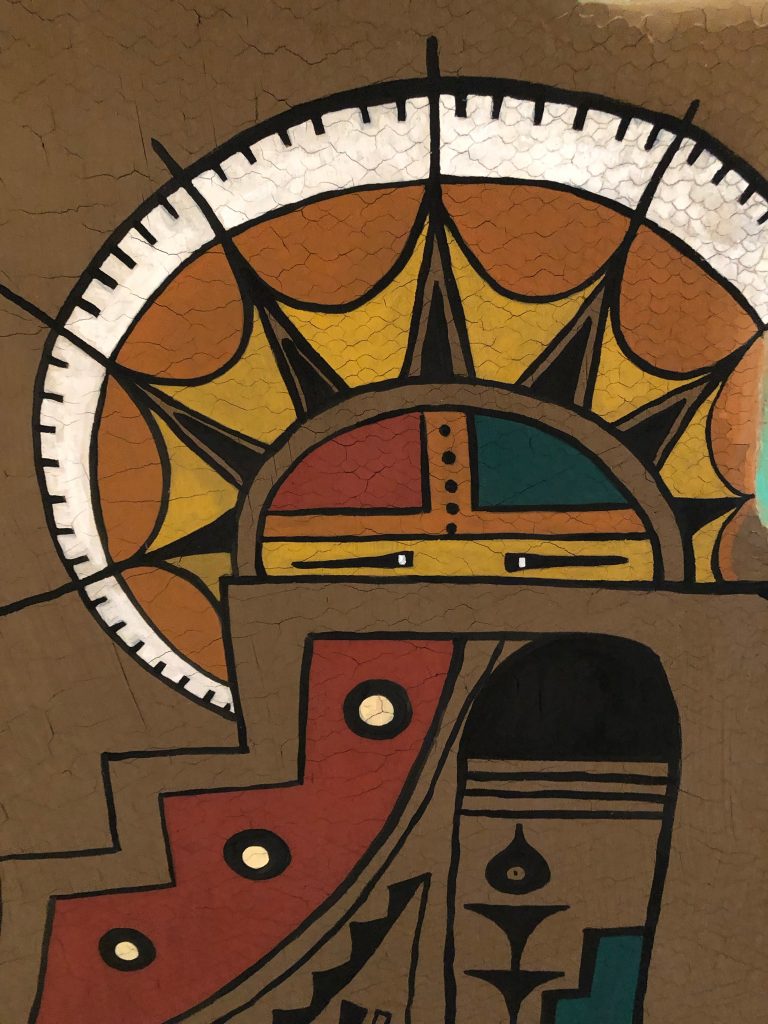
This fresco painting is composed of various harmonious elements and symbols, representing the strength of spirituality within the Pueblo People of the southwest region. The ecological balance with the land provided all the resources needed for our survival. This place of origin held the cultural histories for many centuries.
Indigenous people shared this cultural knowledge with a vital understanding of place, identity, and community. They established networks through foot trails that reached far distances in all directions, including trade paths, religious pilgrimages, ceremonial exchanges, and the most importantly: water sources.
Center Space and Adobes
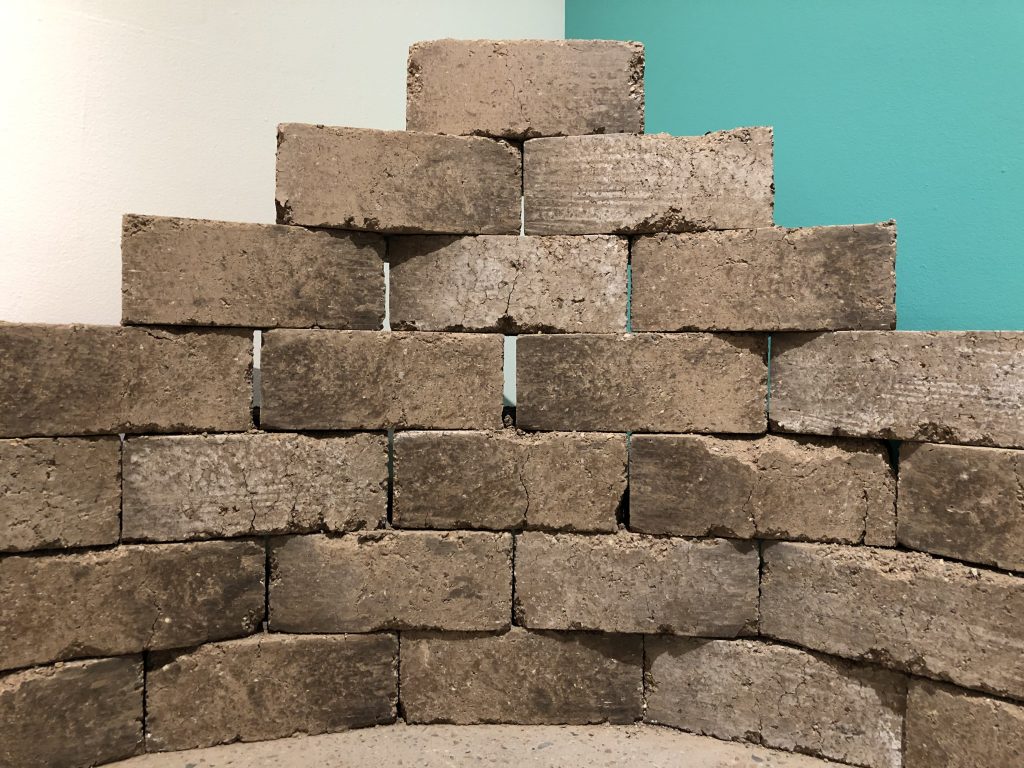
In our magnificent landscape, the human touch upon this land is visible everywhere. Radiating beyond the central plazas are churches, schools and homes, some that are centuries old and some that have long since melted back into the earth. While many building technologies have been used, the most pronounced still is that of adobe. The word comes from the Spanish and Arabic, aṭ-ṭūb and yet these singular mud bricks connect this land to Indigenous people across time and space, but also serve as a metaphor for what it means to build in community.
But as Santa Clara Pueblo scholar Rina Swentzell once noted, “the walls are not the real focus for Pueblo people; the focus is on space containment, on the bupingeh, literally the “center heart place.” We chose to use adobe and to recognize this important concept by countering the rectangular shape of the room, holding the work and promise of reconciliation.
The adobe bricks were loaned for the exhibition courtesy of the Pueblo de Cochiti Housing Authority.
Land of Strong Mothers – Herb Wall (Triptych) by Camilla Trujillo
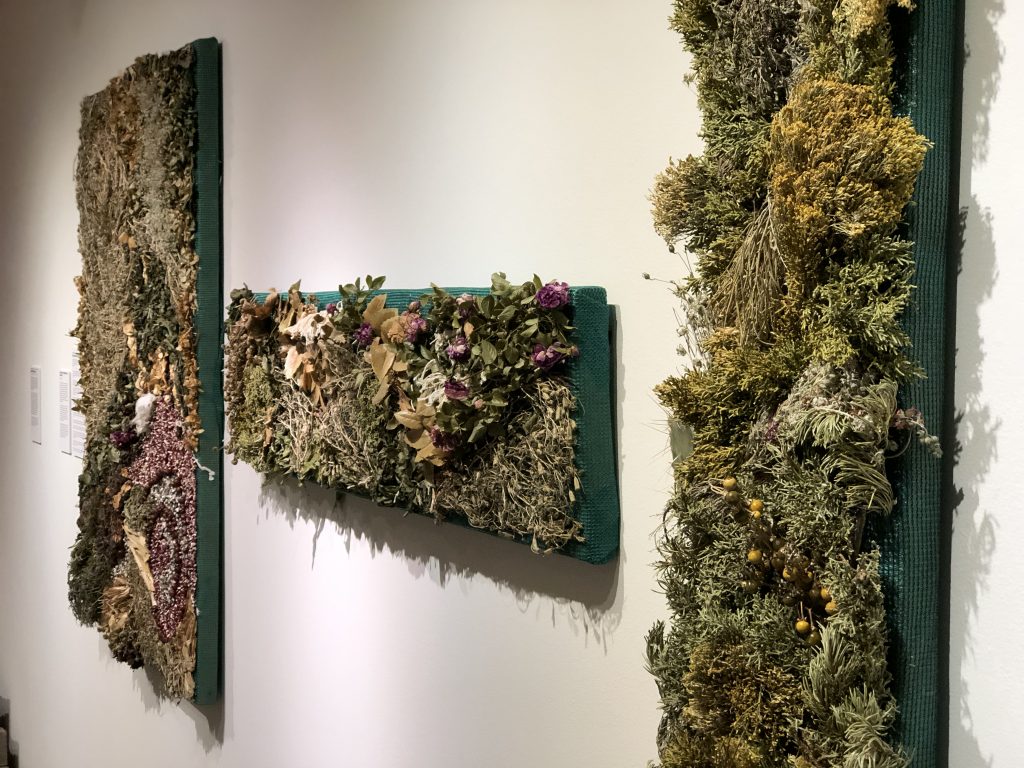
The Herb Wall includes fresh-cut and dried locally-harvested healing/medicinal and food herbs that are familiar to New Mexicans. In a perfect world our children and elders would be served a traditional meal of corn, beans, squash, chile, horno bread, prune pies, etc.
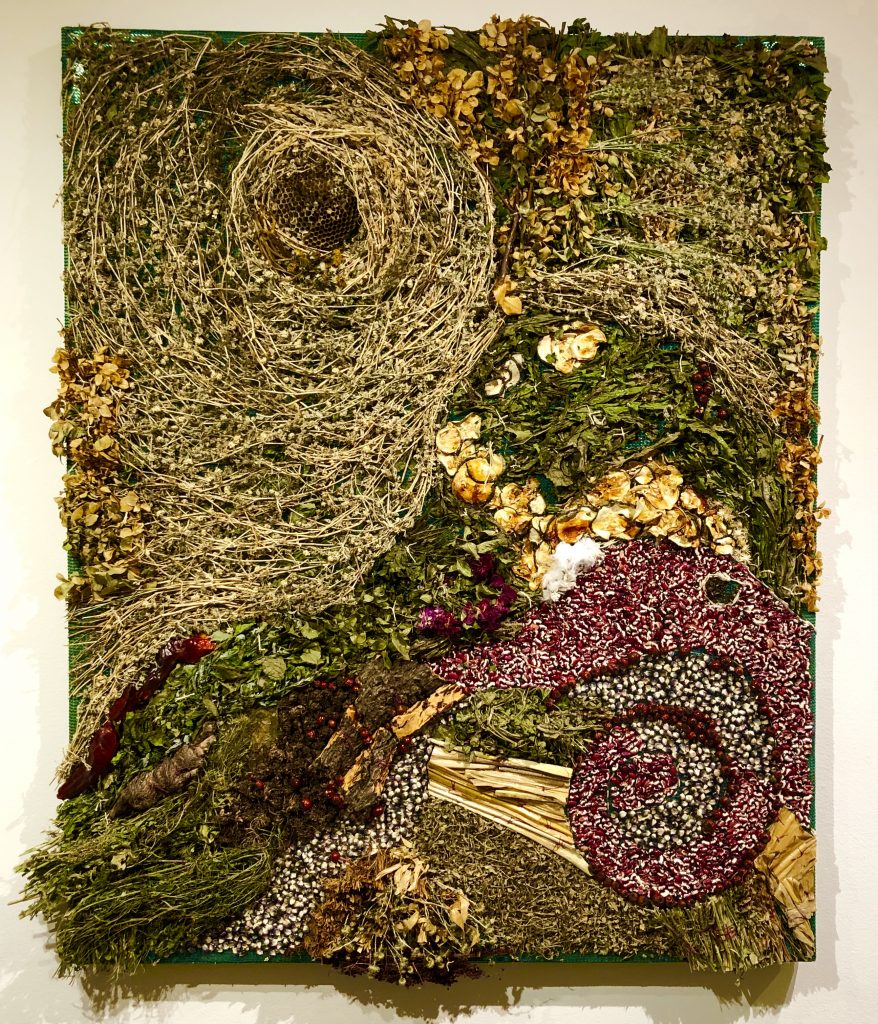
High Desert Healing
This screen holds herbs from the arid plateaus of northern New Mexico. Some of those featured: Juniper (pain), Juniper Berry (prostate), Escoba de Vibora (pain), Horse Nettle (clotting), Chamiso (incense), Estafiate (tummy ache)
Night Sky Over Espanola
Food too sustains and heals. In the 1880’s, the Chile Line narrow gauge railroad took Espanola chile to Denver, and a cash crop was born. Chile, plus beans, corn, and squash are included here. Many herbs featured can be eaten as part of a traditional diet: Dandelions (greens), Quelite (wild spinach), Verdolaga (purslane), Rosehips (vitamin C). Amole root can be made into shampoo, and the Milkweed treats moles. Torito (goathead), encircling the wasp nest moon, can be ingested as a tincture or tea, to treat pain.
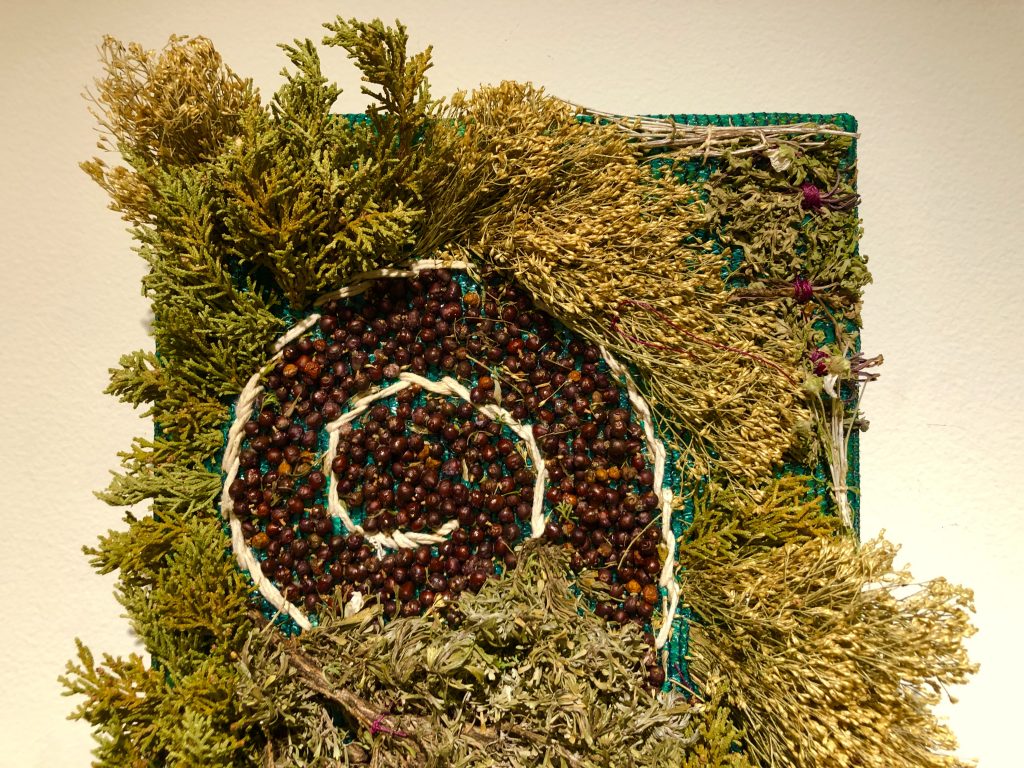
Mountain Healing
Herbs that grow at a higher altitude are extra hearty. The crystal air and challenging conditions bring a special strength to herbs like Osha (protection from snakes, infections) and Yerba Manzo (blood tonic). Evergreens freshen the air and bring hope.
Resolana: The Sun Illuminating Our Reflections by Roger Montoya
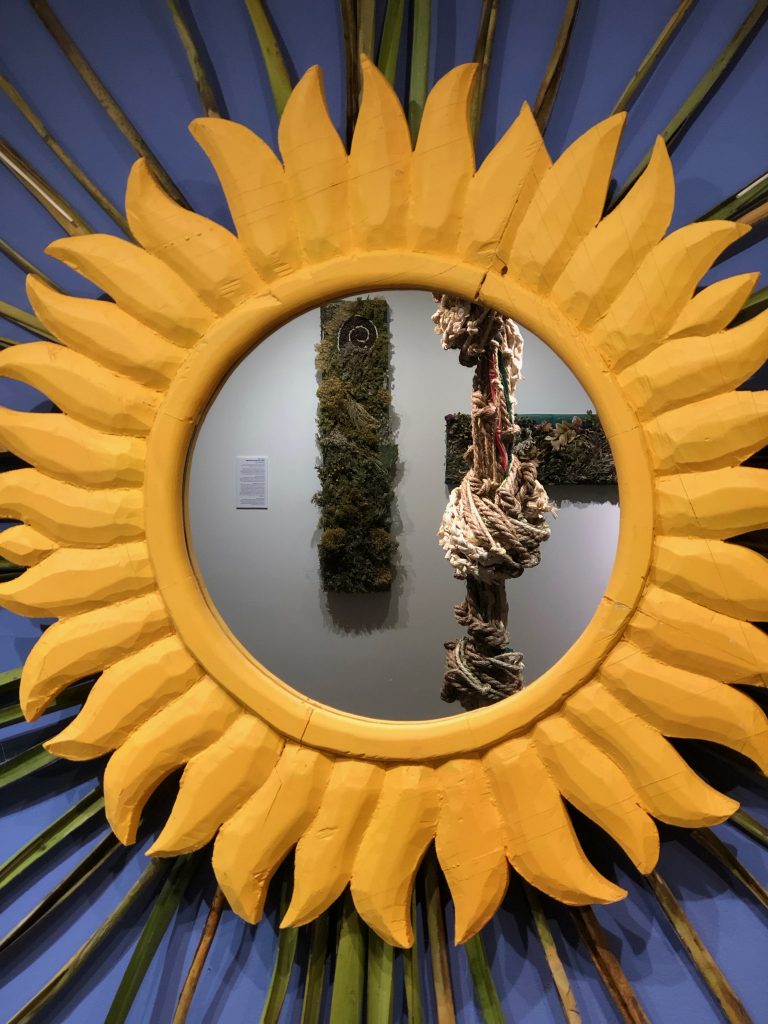
In villages throughout the region, the term resolana refers to both a physical space and a process. It is literally the south side of a building, shielded from the wind and bathed in the rays of the sun. As a process, it refers to the gathering of men and women who carefully articulate observations about their contemporary world, relating the memory and wisdom of those that came before them, and creating an open dialogue for what may come.
In this work, the sun is built from the natural elements, including wood, stalks of yucca and corn. A mirror is placed at the center, encouraging visitors to recognize the power of their reflection in the work of both recovering a deeper sense of identity of the work of reconciliation. While conceived by the artists, it was built by the many hands of Moving Arts Española, where it was used in a student performance honoring the generations before and that will follow.
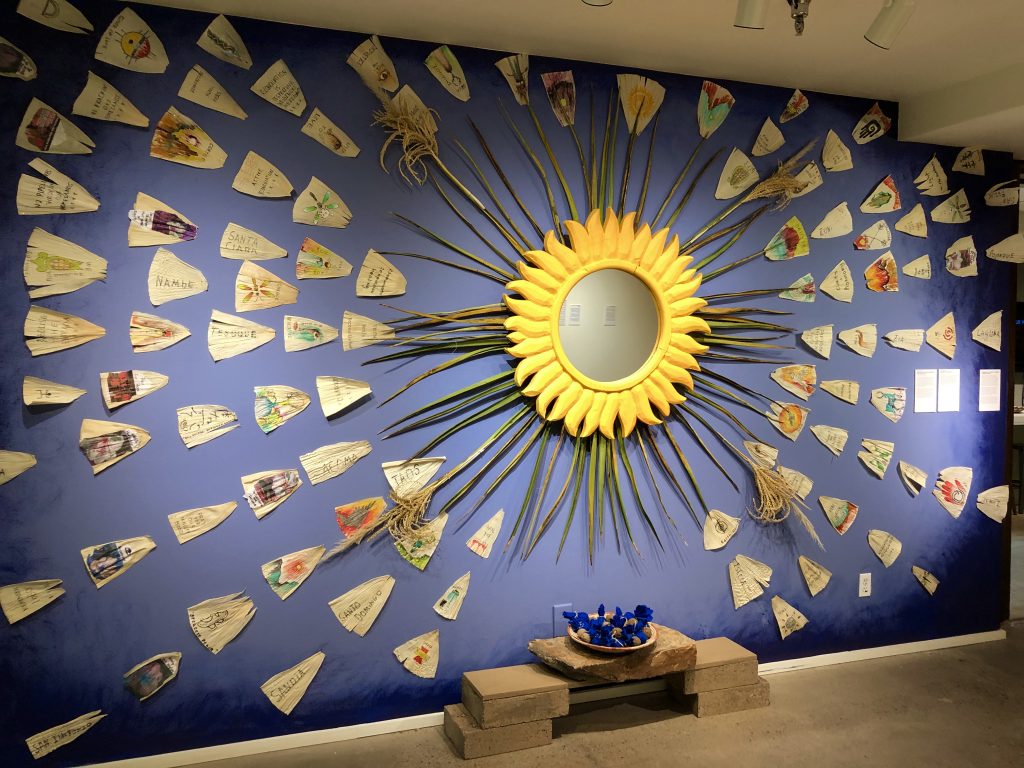
Prayers for Healing by Ramon Barela
Corn is a symbol of sustenance and life found in many Indigenous cultures worldwide. Not only is corn an important food source, it is also highly regarded and used in ceremony in many Native cultures.
The corn husk drawings and texts are reflections on the exhibition theme reconciliation, created by exhibition artists and museum guests. They are installed in a radiating pattern, as a metaphor on how the Sun provides life.
Owingeh Tah – Pueblos y Semillas – Community Seeds
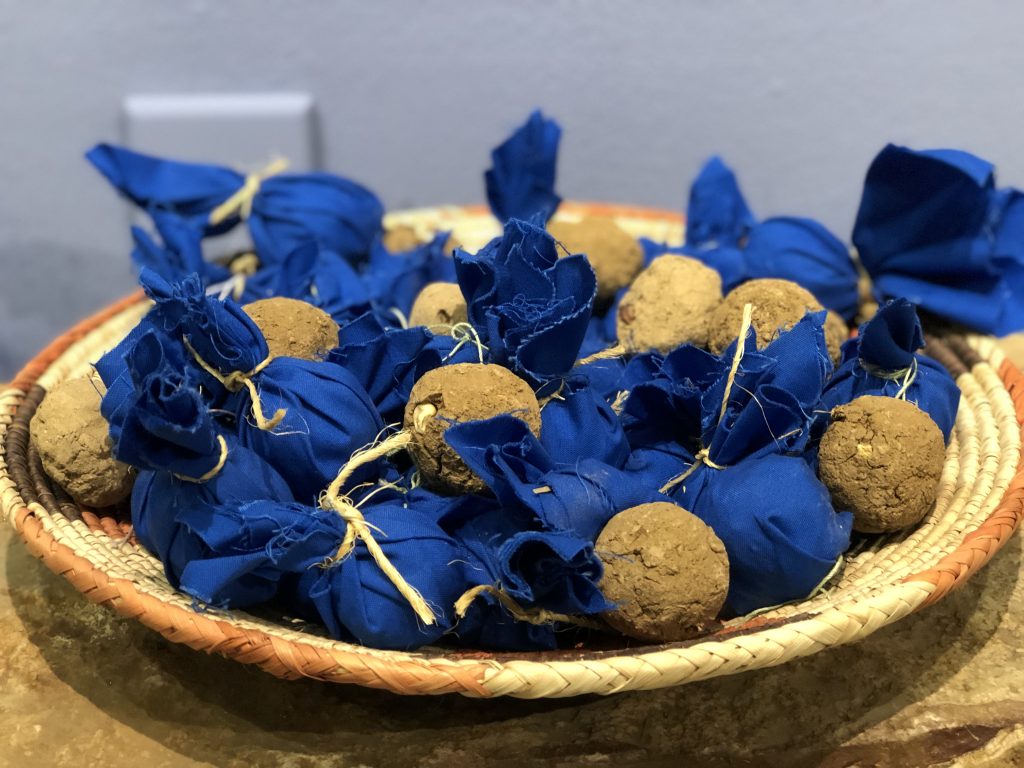
Owingeh Tah – Pueblos y Semillas is an annual gathering that takes place in Pueblo and Acequia communities, to honor seeds in a spirit of hope and reconciliation. Owingeh Tah is Tewa for “communities” and “seeds” and honors the ancestral homelands and seed relatives of Tewa Peoples. In ceremony, people from four directions present their seeds, blessed by the ancient Catholic Hispano lay cofraternity Hermano Penitentes and Pueblo spiritual traditions, alongside soil and water brought forth by the next generation.
Seed balls made with these combined elements are taken home to keep or bury, with hopes of staying rooted in an intergenerational spirit of respect, balance and responsibility to all our relations. Our shared survival is entwined with our ability to care for our seeds, land, water, ecologies and each other, adapting and upholding our strengths as Indigenous and land-based peoples of this place.
The seed balls were loaned courtesy of the New Mexico Food and Seed Sovereignty Alliance, which is composed of six organizations: New Mexico Acequia Association, Honor Our Pueblo Existence, Traditional Native American Farmers Association, Tewa Women United, Agricultural Implementation Research and Education; and Flowering Tree Permaculture Institute.
Germinations
by Deborah A. Jojola (Isleta and Jemez Pueblos)
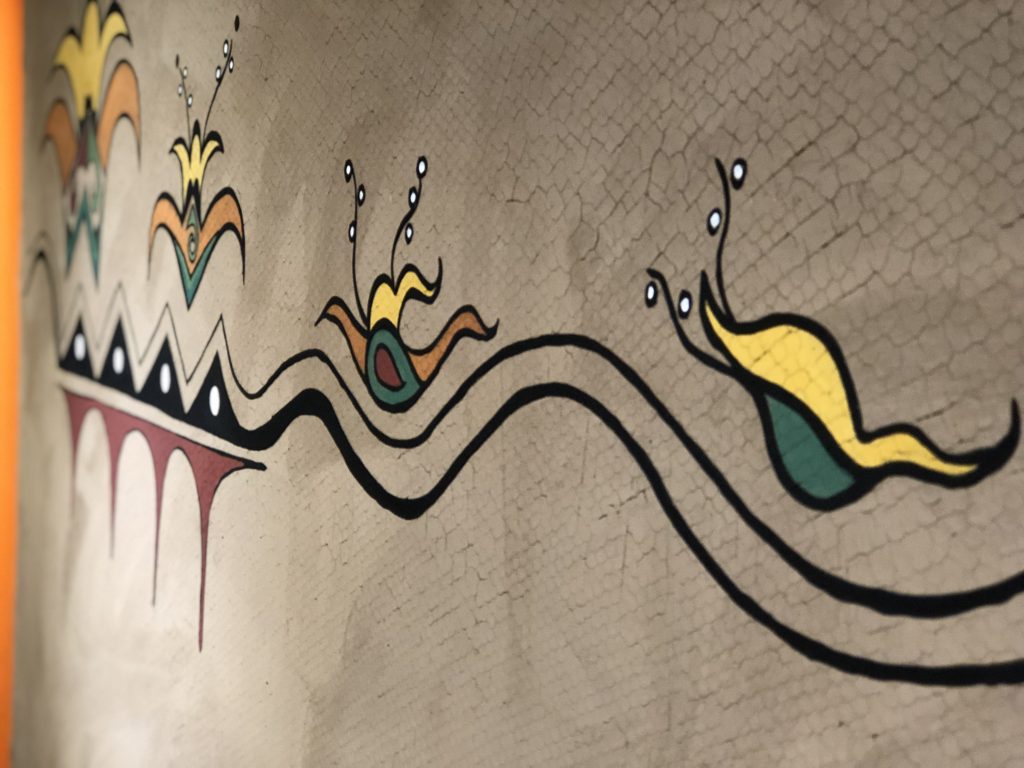
Many Indigenous cultures have experienced trauma and some type of genocide to a certain degree in history. The truth about these histories are seldom taught in our classrooms. They are often glorified by a one-sided victory of defeat or conquer to civilize the savages.
Strength and resilience are the foundation of our existence. Reconciliation begins with an awareness of these histories and help us plant the seeds that will germinate and develop a new understanding of our core values. Through understanding and sharing our cultures we will continue to positively influence the growth and development of our youth.
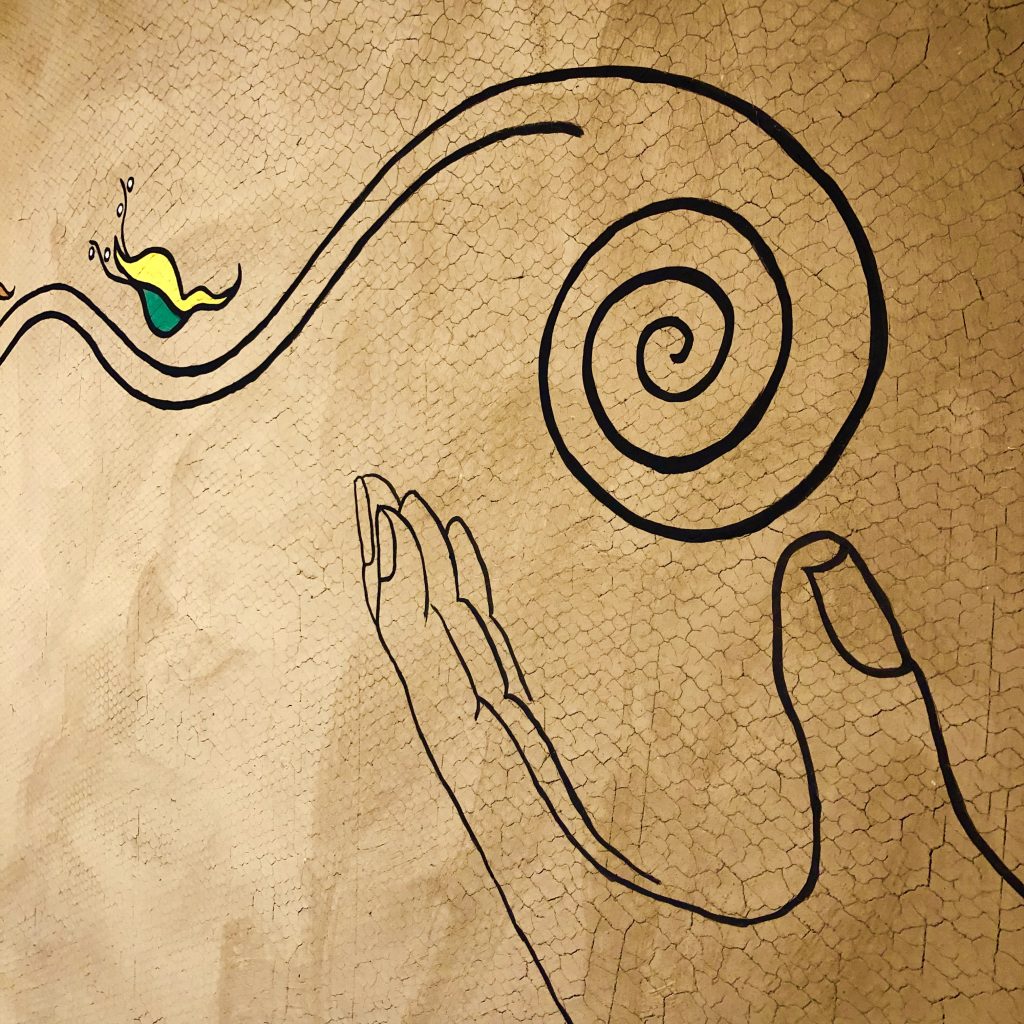
How do we continue to co-exist and tell the real truths of our harsh past in order to begin healing in a unbalanced world?
Healing Garden
The Reconciliation Healing Garden features local living plants and herbs that many people and communities in the region cherish, including corn, squash, chili, tobacco, and mint. One of the goals for this garden is to convey an atmosphere of healing, reconciliation, and transformation.
Planted within the garden are signs with phrases that express truths, thoughts, hopes and prayers related to the reconciliation process. Collected from local individuals and organizations within our community, many of the statements such as “We are each other’s solutions,” or “Healing is Resistance” resonated with our efforts towards strengthening our communities.
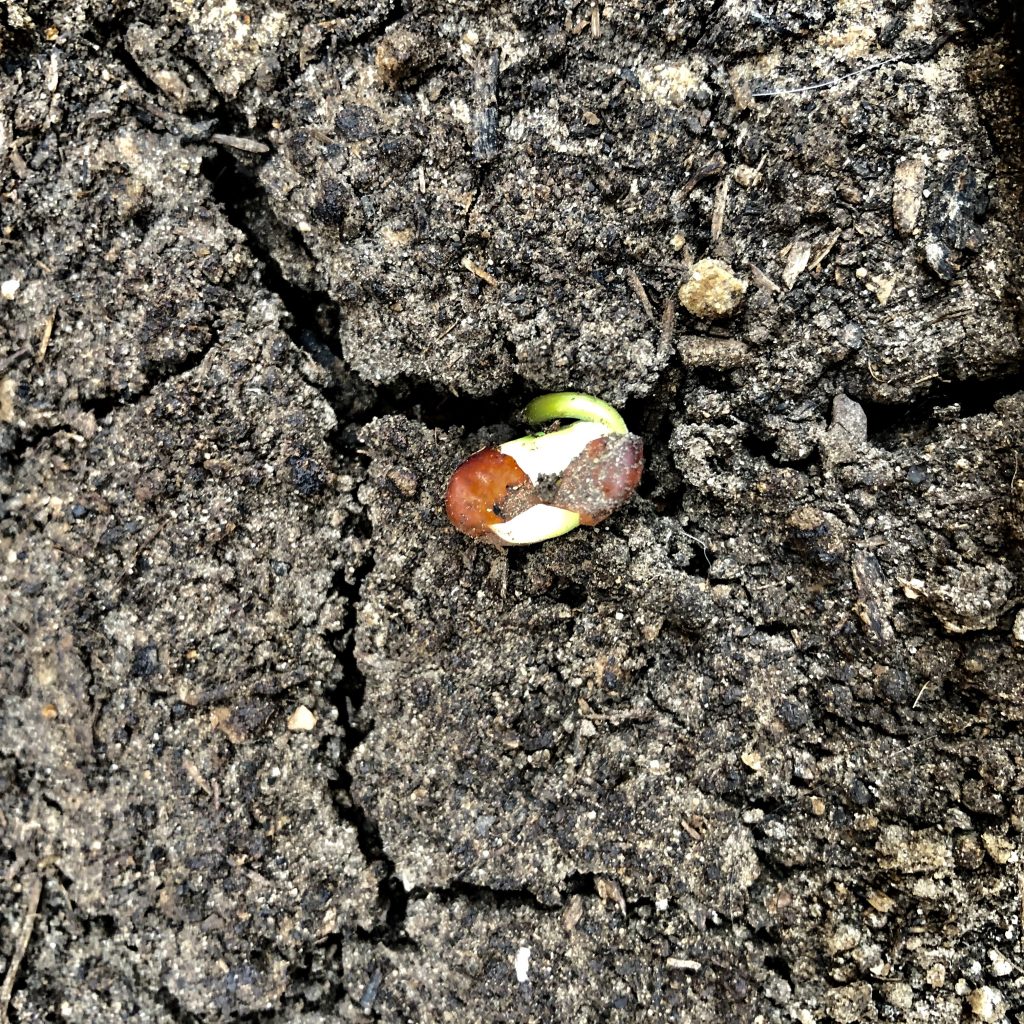
Reconciliation is not a one-time event, but a longer process, symbolized by this garden’s growth of plants and hopes. Through this project, we aspire to healthy, meaningful dialogue within our communities. The Healing Garden was supported by the Institute of American Indian Arts (IAIA) Land Grant Program, who provided the seeds, planting and design of this garden.
The question that we asked our community members was to come up with a phrase that reflects their hope, prayers, and thoughts of reconciliation. What is a phrase that you would come up with?
The Sound of Convergence and Community – Sound InstallationS
The soundscape reflects our diverse eco-system found in the region, adding an audio element to the gallery environment as another form of healing. Translations for the word reconciliation and sentiments are recorded in Tewa, Diné, Spanish and Keres and layered with sounds of birds, wind and the acequia that were recorded in various local surrounding areas including Cochiti Bosque, El Moro National Monument, Cochiti Lake, Santa Fe and the Acequia del Medio of Chamisal.
In recognition of the effort to discontinue “La Entrada,” several poets were engaged to create a proclamation in 2018, which is interspersed in the soundscape. The music of the Matachines dance, a shared tradition in both Native American and Indo-Hispano villages, is incorporated in the piece. This version recorded in 1991, performed in memory of the Pueblo Revolt, serves as a testament to reconciliation.
We hope viewers will get the sense of their connectivity to nature and their respect for the earth. Recording voices include Josh Suina; Ramon Barela; Estevan Rael-Gálvez, Matthew J. Martinez and Sunny Dooley. Matachines musicians include Charles Aguilar on Violin, Jerry Velarde on guitar and Eddie Gutierrez on guaje.
My own reflections
We imagined a map to move us through to the other side of trauma, tracing the arc from truth toward transformation.
We drew memory, spirit and story and braided, built, layered and began to grow it, using mud, evergreen, seeds, pigment, sound, adobe, corn husk and paper.
With the help of hundreds of little hands, we created thousands— a field of yucca moths at the entry to remind ourselves of how much we need one another to survive in respect.
We took the symbols of our ancestors, images of spirit, sovereignty, and resilience and with pigment upon wet clay created beauty on the north and south walls.
At the center, we honored cords, braids and knots that once carried the imperative of communication and survival and remade these to re-member that we are like these cords now, woven together.
We took mud and memory to round the corners and reveal the spirit of bupingeh, the center heart place.
Upon the west wall we honored the land of the mothers who gave us the healing herbs and foods, to give voice and soothe the pain.
On the east wall, we honored the resolana, in wood and yucca and corn and placed at its center a mirror to see all of creation, including ourselves complex and magnificent beings.
From the sun, we took husks that once held the sacredness of corn and placed images, words, and stories of truth and transformation.
From all four directions, we created an offering, taking our hands and from the seeds and wet earth created seed balls reminding us that we must hold onto the sacred.
We drew together the sounds of dance, poetry, nature and language and from it created an apology and a prayer.
In the garden under the sky we built beds to hold the promise of life and growth.
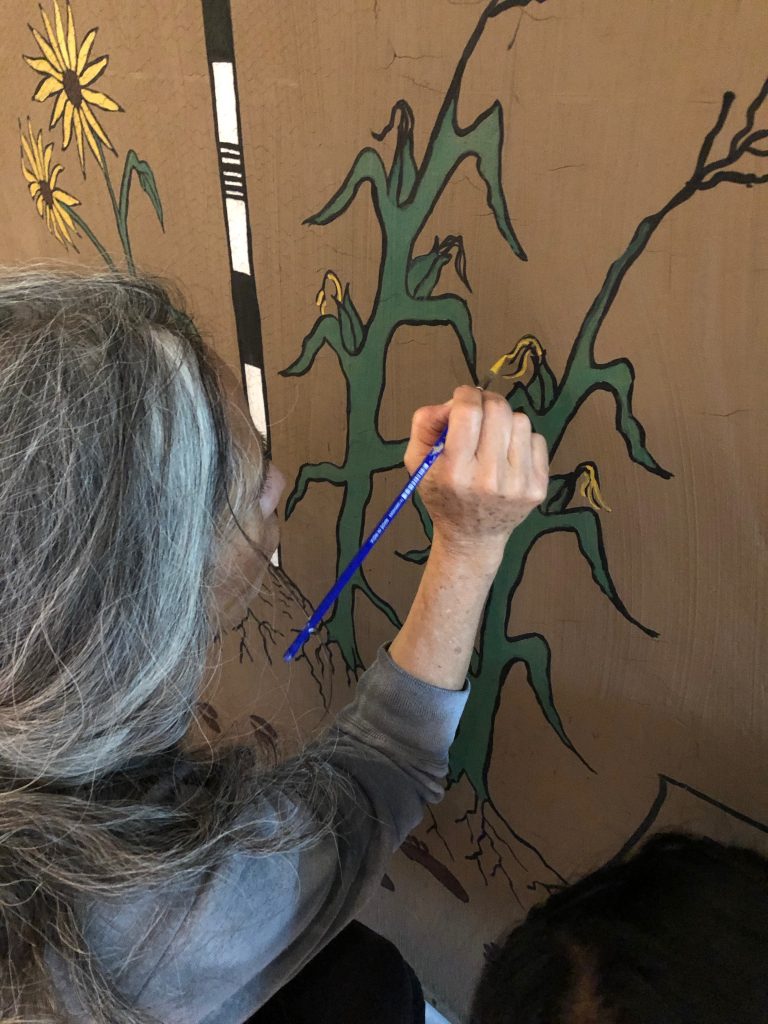
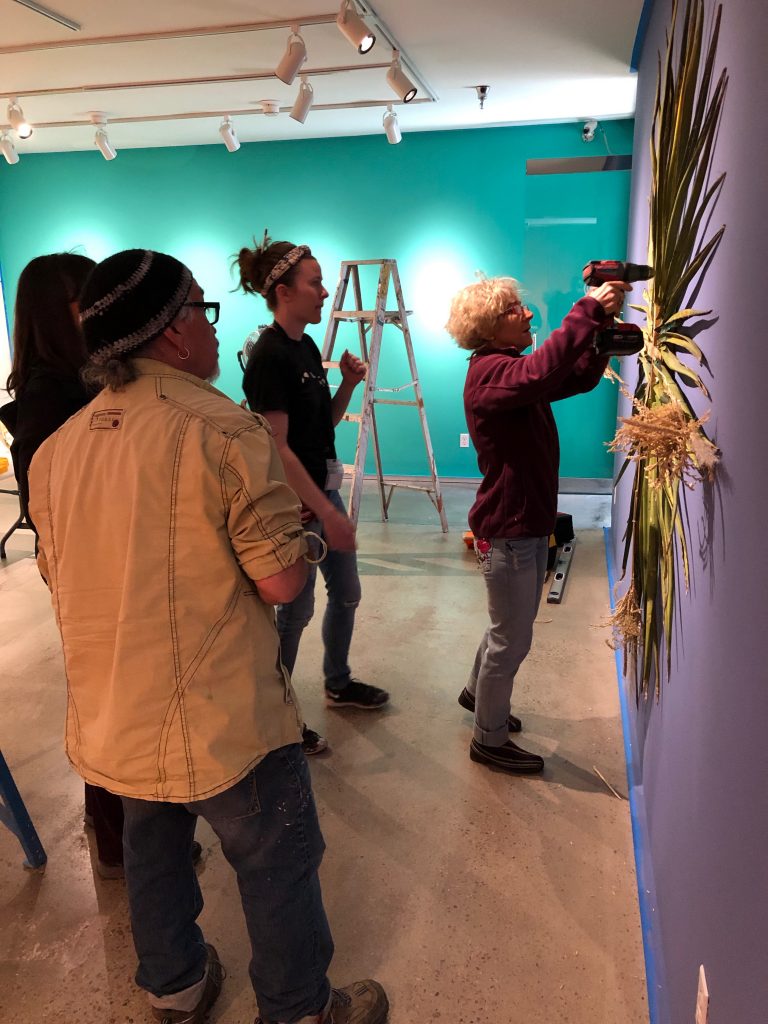
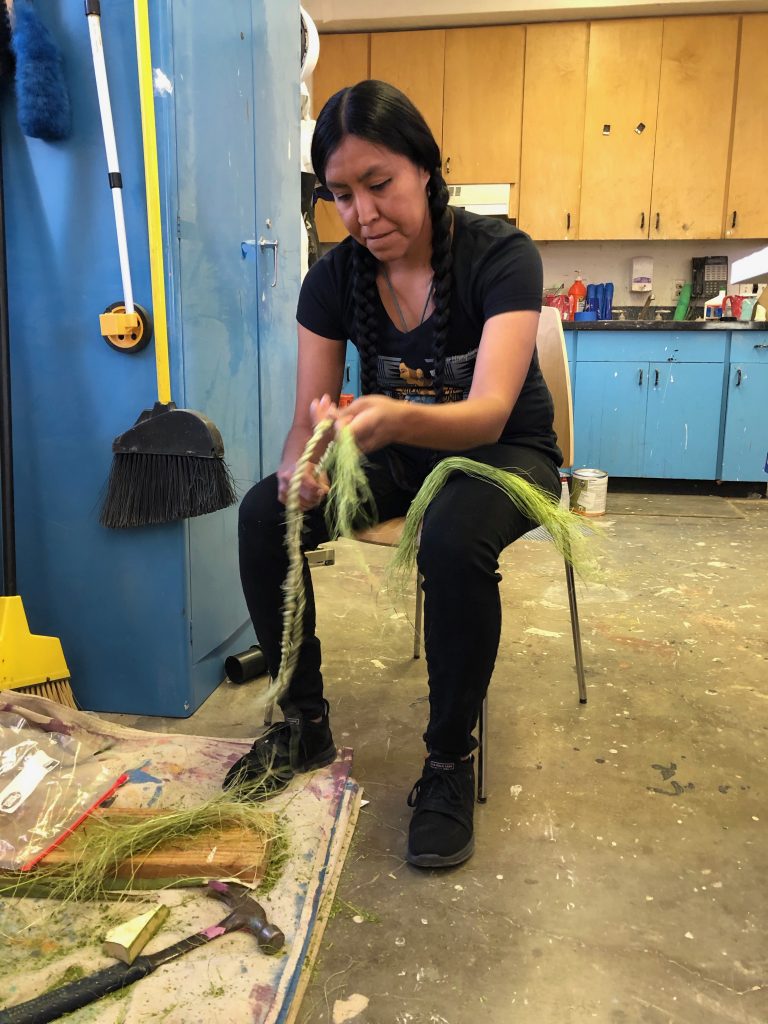
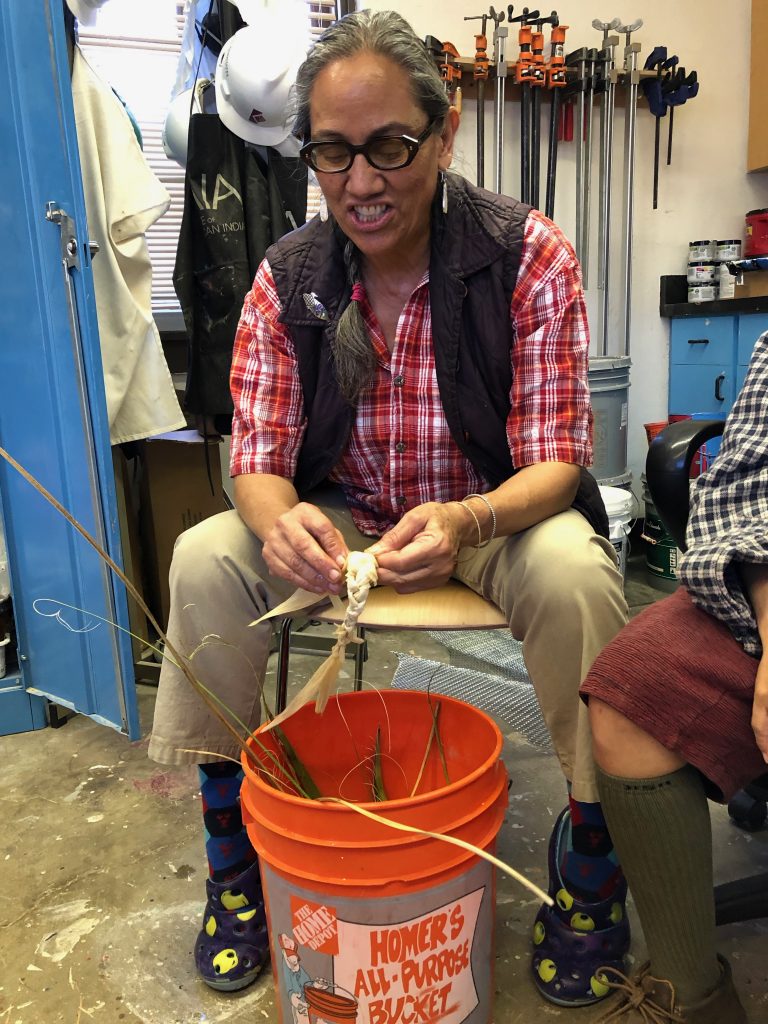
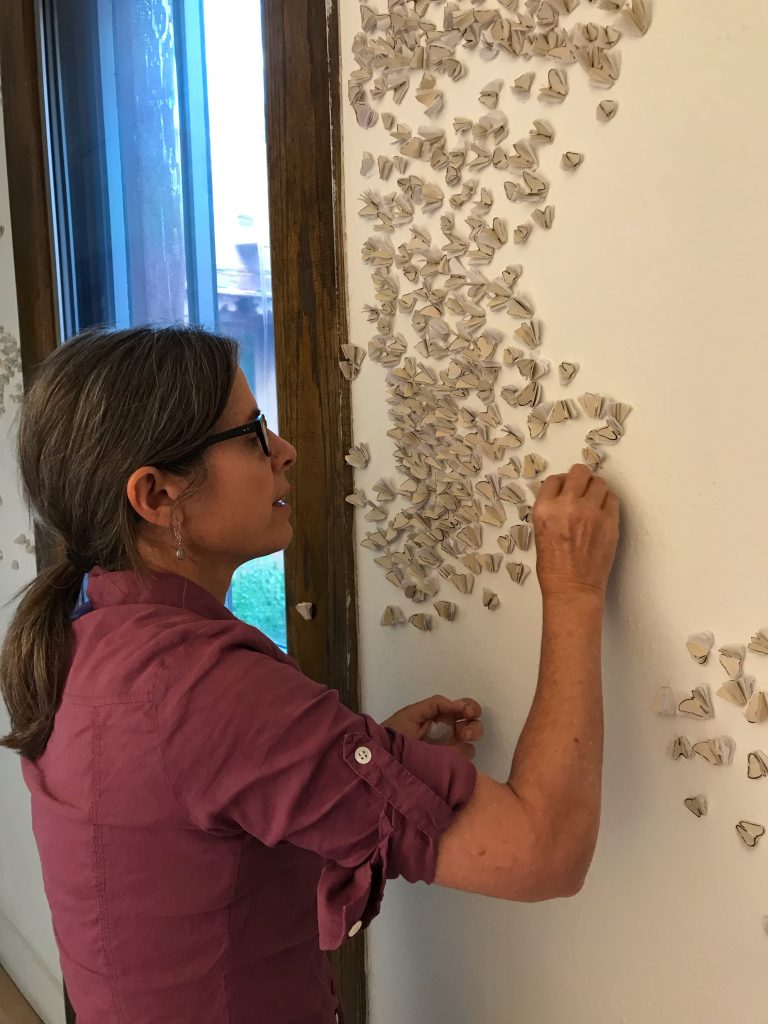
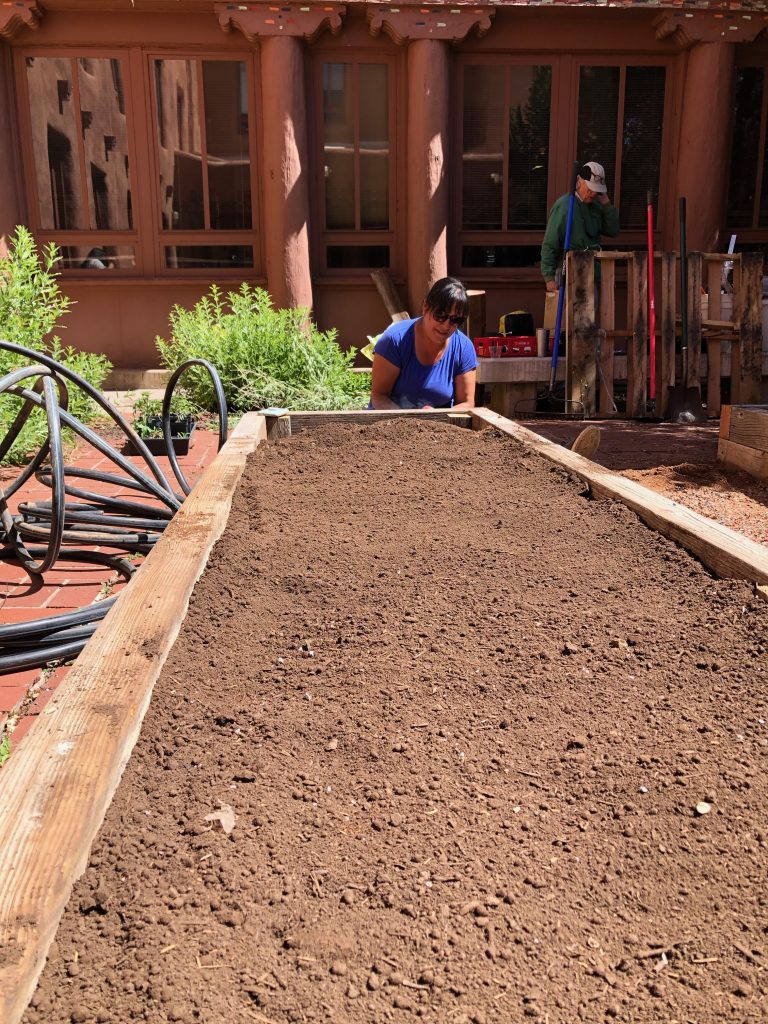
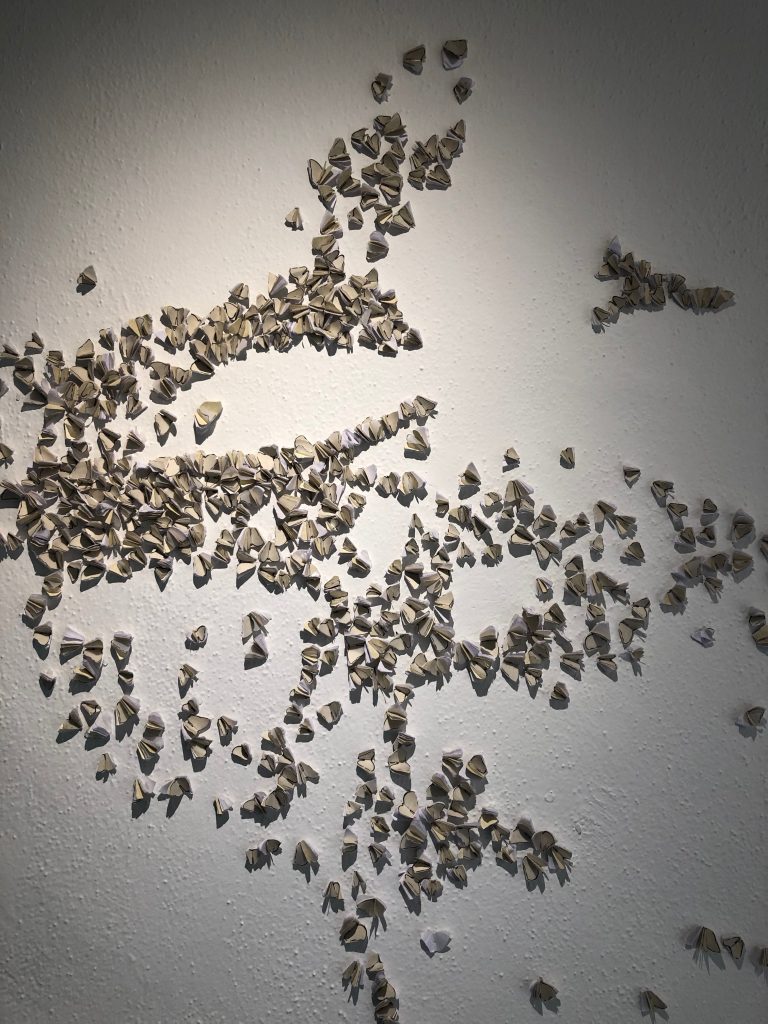
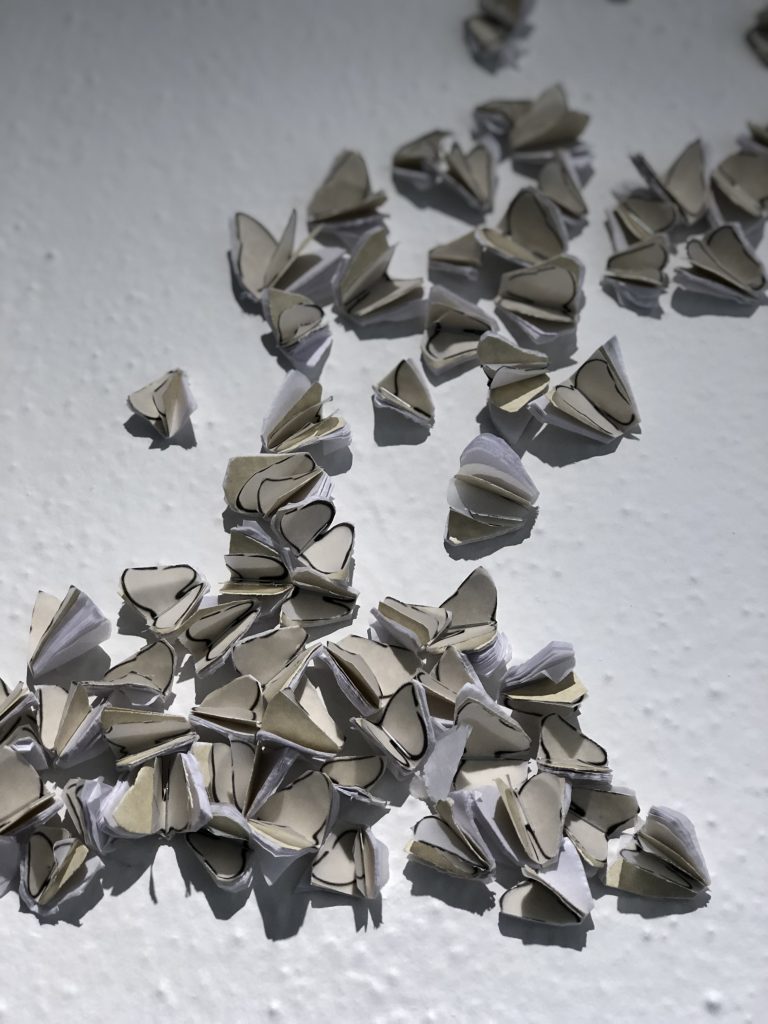
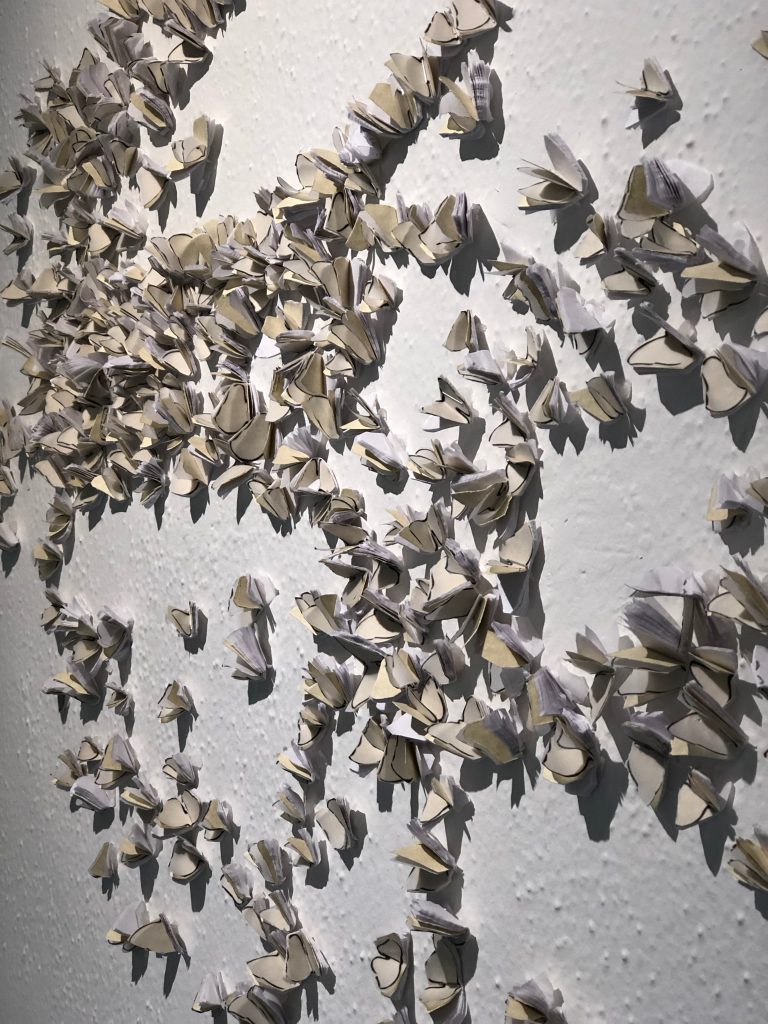
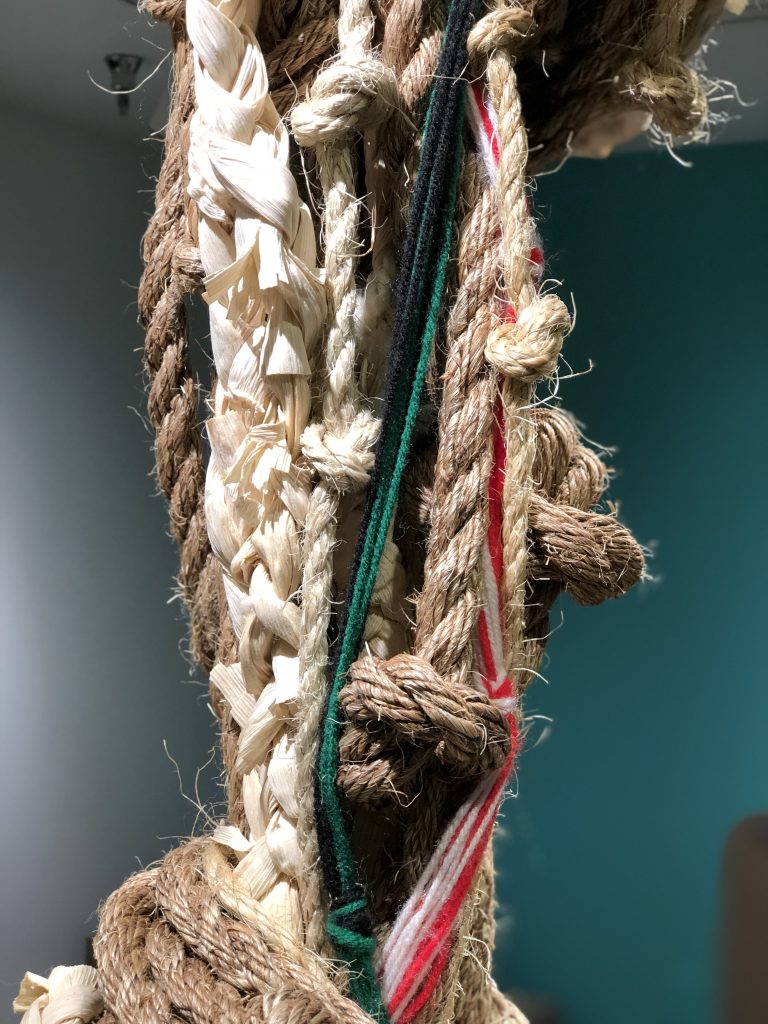
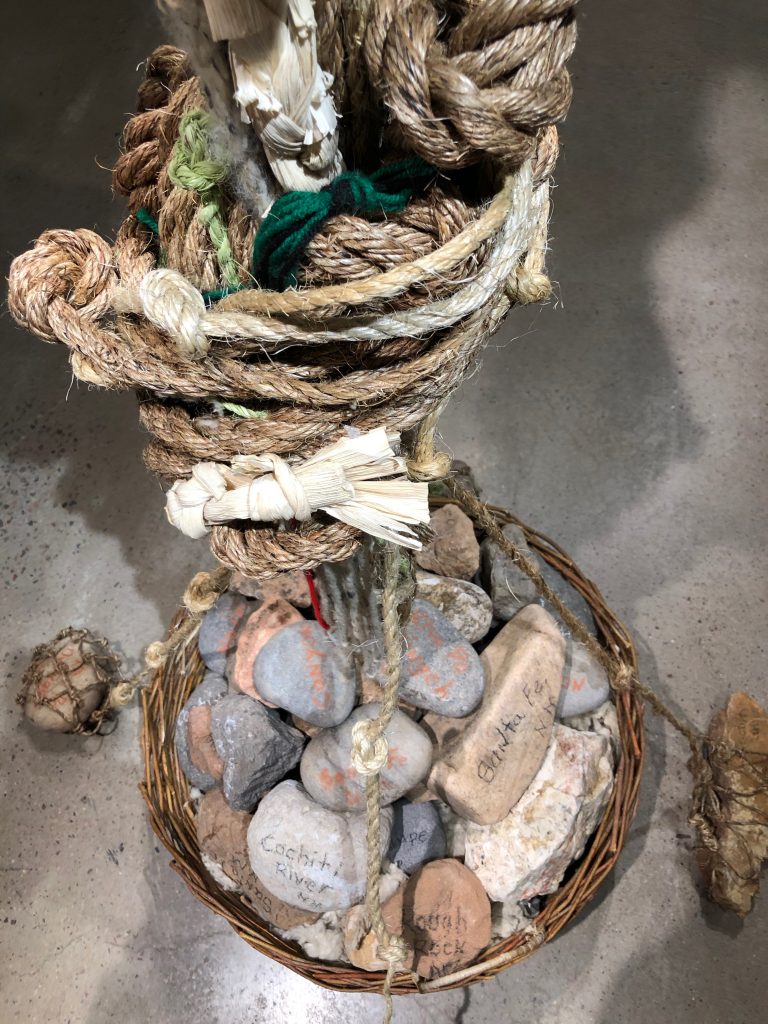
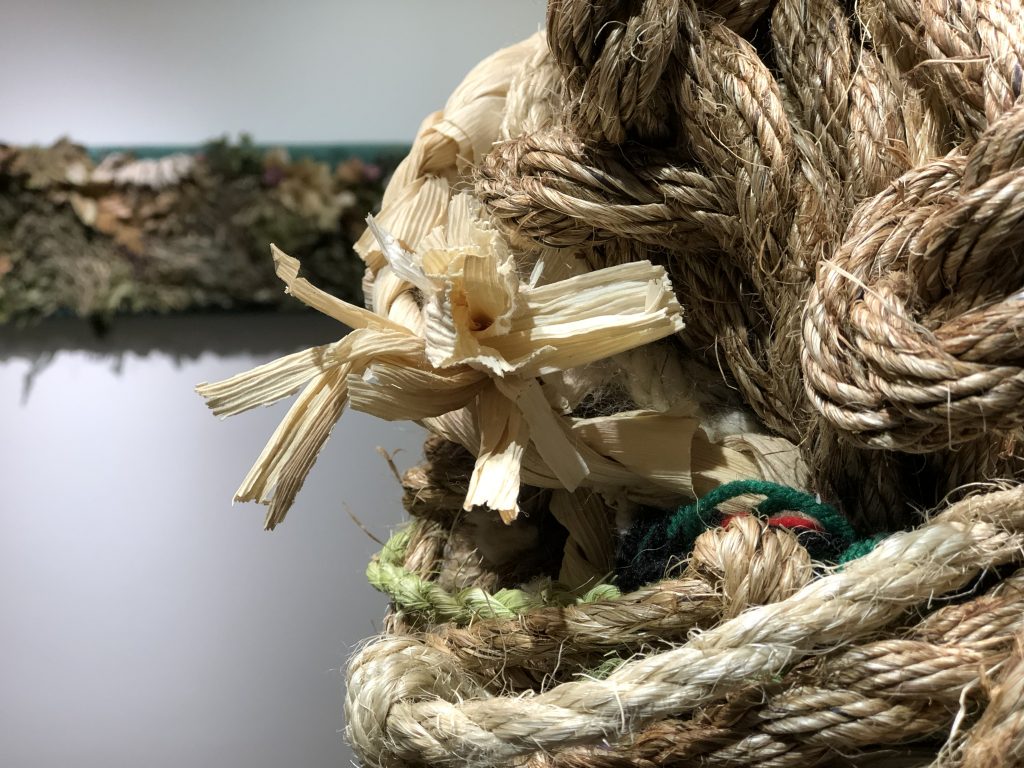
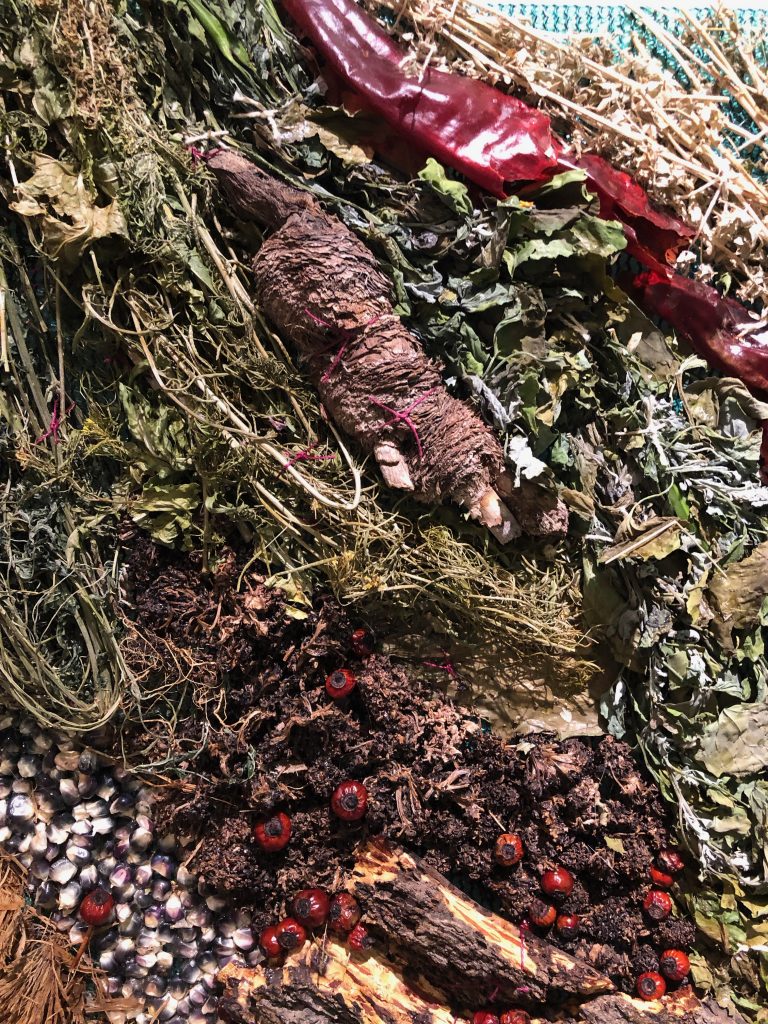
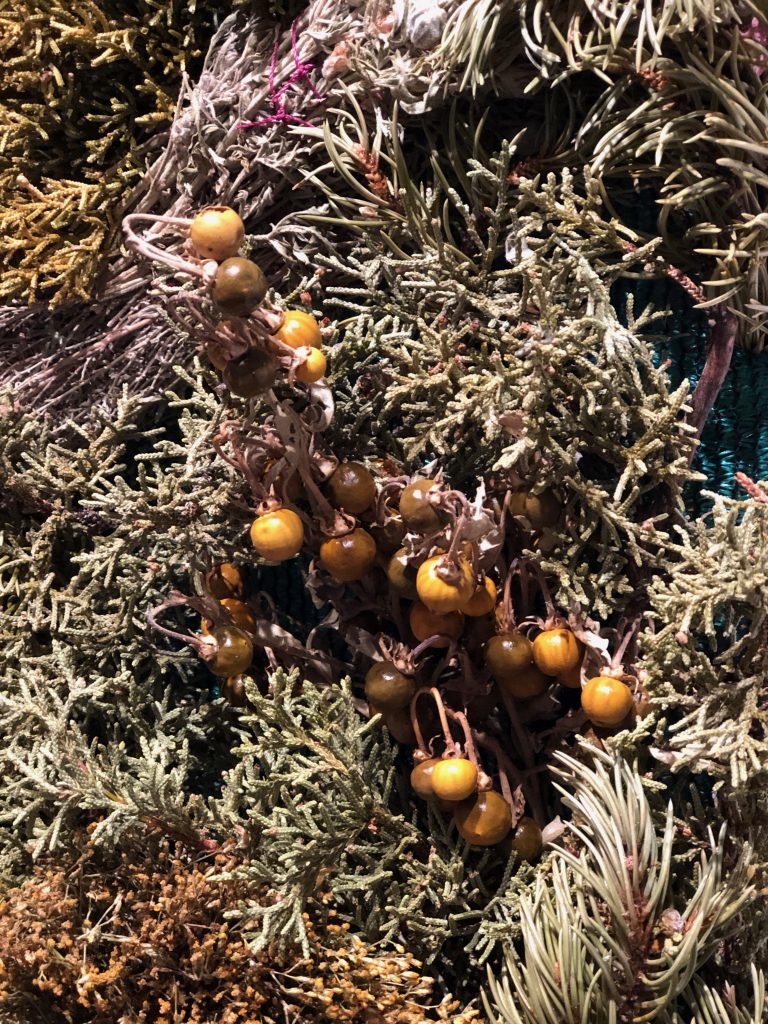
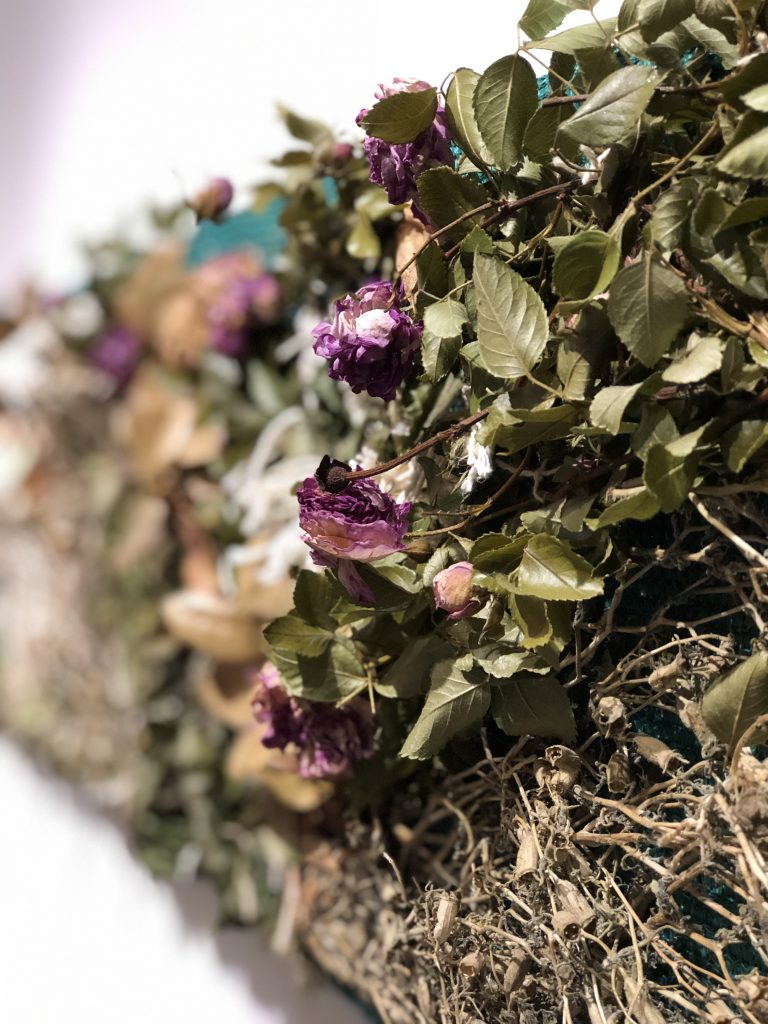
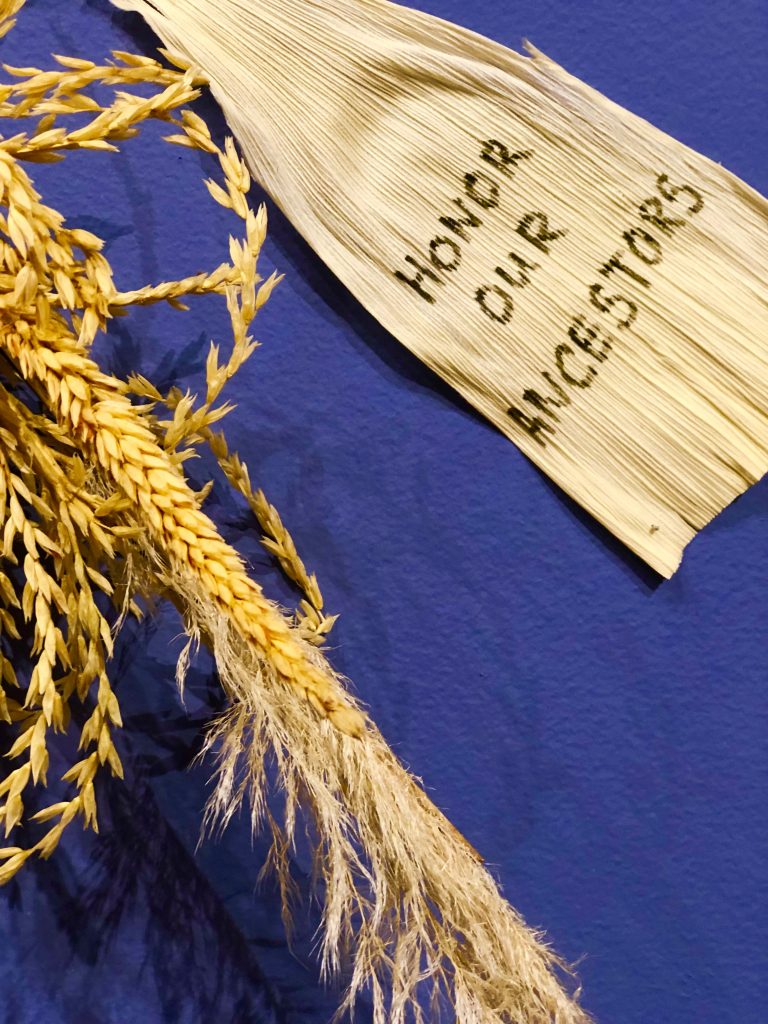
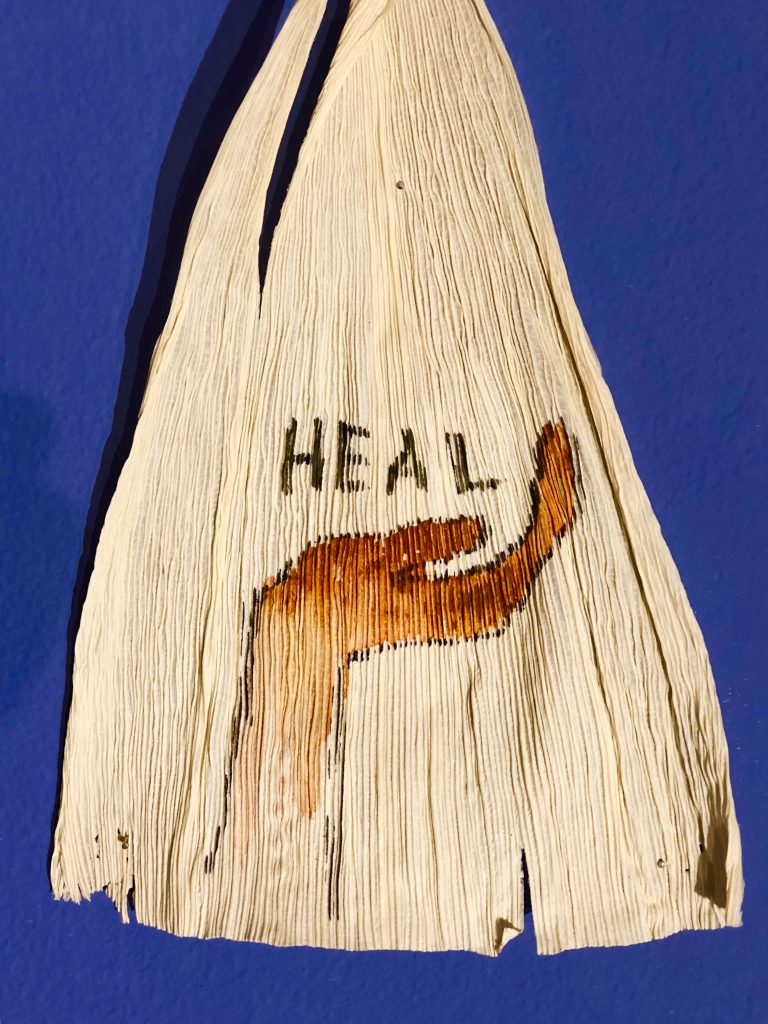
One thought on “RECONCILIATION”